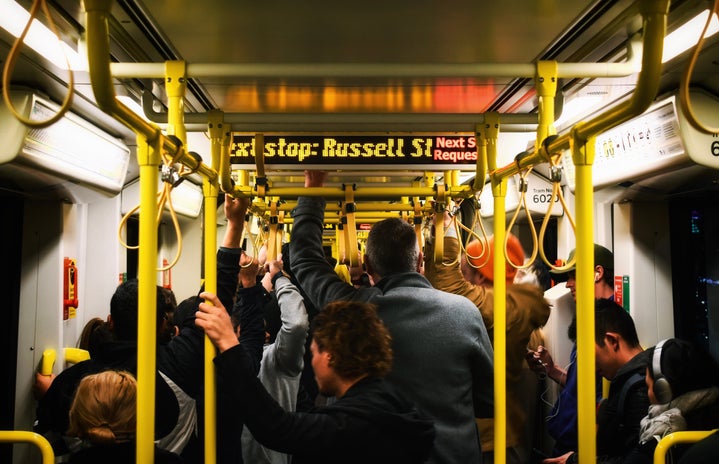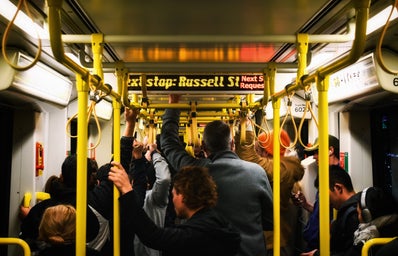If you have been to the Six Flags over Georgia, you have probably seen the Dahlonega Mine Train. If not, Six Flags is fun and you should go, but eat before going because the food and drink there is expensive. At Six Flags, there are many beautiful sights (especially around Holidays), and there is this ride called the Dahlonega Mine Train. Other than throwing backs out and knocking hats off, it’s extremely fun. There couldn’t be anything political or offensive about a ride or its name, right? Unfortunately, that’s not right. The ride’s name is offensive and a harmful reminder to the Native and Indigenous people who were forced to hop on this train while stonewall jackson mined through their land.
Recently I was in Atlanta with my Agilisi (grandmother) getting lunch together. We are both Atlanta natives, so I thought over the years that I had heard every story about the makings of Atlanta. Georgia Studies is a mandatory class that many Georgia students took during the 8th grade, so if I didn’t learn the stories from my nana, one would think that the class would have taught me greatly about the natives that are from this area. I was wrong. It’s incredible how school’s pick and choose what they want to be taught and what not depending on their agenda.
As we were passing the capital building in Atlanta, I commented on its beauty and the shiny gold dome on the top of it. I had never thought about where the gold came from, and instead focused more about how in the world they got that huge dome on top of a building and how heavy it must be. Well I needn’t be curious about it any longer or ask any questions because my Agilisi knew all about this building.
The gold is from a Cherokee tribe that was in Dahlonega. In the late 1820’s stonewall jackson “found” gold. This kickstarted a gold rush that was the 2nd in the U.S and the 1st in the South. As you can probably assume, the government and military did not ask politely for the land. My grandmother spoke to me about the lives of our people that were living there and their lives and customs… but everything changed when the colonizers attacked. My ancestors were forced off of their land so that the gold could be accessed, and they scattered the tribe that was staying there. This was a precursor to the Trail of Tears.
Some of my ancestors were renegades and hid in old Atlanta, but others did not have that chance or could not risk it. It has been about 200 years, and many displaced Natives from my tribe still can not find each other. It’s easy to believe that Native struggles have ceased since the Trail of Tears and monumental events such as it have ended, but this is not true. Natives make up a small population of the U.S, and often we have no one to fight for us. We have people that demand for us to register or we aren’t true Indigenous people. We have to find a tribe, root ourselves into it, and fit this “Indian” stereotype, or we’re left to the wind. Not all of us look like each other. Not all of us are on reservations. Many of us are still hesitant and fearful, and keep our Native identity lowkey. It’s ridiculous that it is 200 years later and we still can’t live on our land.
Agnes Scott speaks greatly of this “land back movement”. As if an acknowledgement to the land the creators of this private, elitist college stole from indigenous people helps. They are split up, often underfunded and in poorer conditions, and most of the time go without proper schooling. Why would they want to go off to school anyways when we have seen what America has done to Natives that wanted to attend school? Atlanta is stolen land. Decatur is stolen land. Made from stolen gold, stolen resources, and the tears of the Natives that were forced from their land. Most tribes and Native religion/spirituality thrives from nature. Their spiritual connection was torn to shreds as they were pushed off to board this metaphorical train. A “land back movement” doesn’t help people that don’t have land to connect to. Try giving money, scholarships/full rides, and doing something a little extra than an outdated website or brief mention at orientation.
It’s saddening to see and hear of the tragedies still being uncovered. The Earth being opened up to see “burial grounds” of beautiful Native children whose family never heard from them after trying to or being forced to give them a better education. There are lights in the darkness. Media sites such as Tiktok and Instagram have made a pathway for Native artists to come through and teach and just be authentic. Also, many people and organizations are starting to recognize and/or raise money for tribes and families that have been inflicted upon. For example, the red clothing and dresses in the space in front of Winship. It was beautiful and a nice idea. However, it was also incredibly blind to have these dresses that are supposed to represent people hanging off of trees. Will the efforts of the descendants of colonizers ever be enough? It seems like if it will ever be, there will be a huge price to pay. With both Natives and Africans having the white wrath showered upon them, it will take longer than this world has left to fix these damaged ties.

